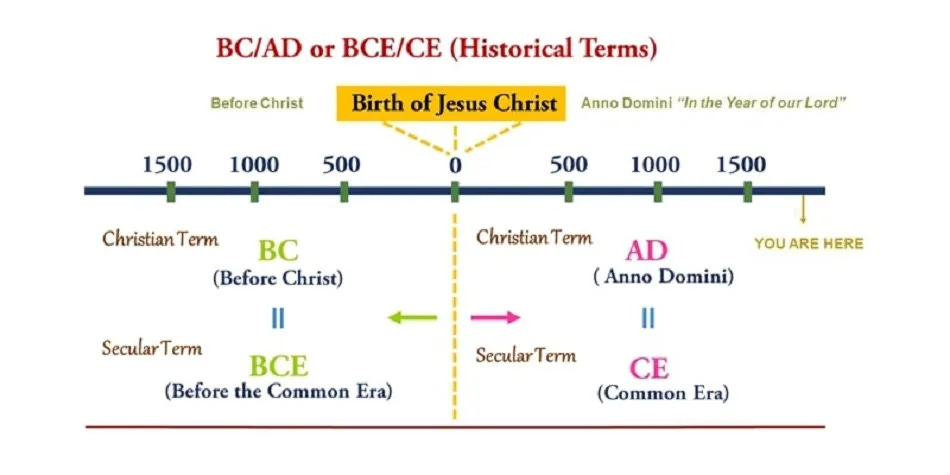AD/BC or BCE/CE
How does it work?
Dear Classical Wisdom Kids,
Learning history can be tricky - So many people! So many places! So many dates!
And while it can be so fascinating and fun, many kiddos (and adults) can get frustrated learning and remembering the dates. One reason for this is that it is easy to be confused by AD and BC... and it may be even more confusing to see CE and BCE. So today, we’re going to explore what these letters mean so history lovers -both young and old- can love history even more.
Before we get started, it’s worthwhile to point out that in the Western tradition we see history and time as a line. Literally called a timeline, we take the entirety of civilization and place it on one line. Now, it would be wonderful if this line started at 0... that would be handy!
But unfortunately no one agrees or even knows when 0 should be...
In the 6th century a Scythian/Roman monk, Dionysius Exiguus, came up with what is called the “Dionysian eras” and the terms anno Domini (AD) and before Christ (BC). AD and BC are used to establish a standard timeline for historical events and the letters AD or BC come after the year, so you know if it was before Jesus was born or afterwards. AD is for everything after Jesus was born and BC for all the years beforehand. We are currently in the year 2024 AD.
Dionysius introduced this system to date Easter and other Christian events. He used what he believed to be the year of Jesus Christ's birth as the reference point, marking the year of His birth as AD 1 (although modern scholars generally agree that Jesus was likely born a few years earlier). The system gained widespread use in Europe during the Middle Ages and later spread globally through European colonization and influence.
In 1615, Johannes Kepler came up with the alternative concept of the 'Common Era' (CE) or 'Before Common Era' (BCE) which was meant to be more neutral. CE and BCE still use the supposed date of Jesus’ birthday to separate more modern history from ancient history, it is just the name is not so religious. Just remember: CE is after Jesus (AD) and BCE is before Jesus (BC). This system became more widely used in the mid-19th century by Jewish religious scholars, and in the later 20th century in academic and scientific publications.
Today it is sometimes up for debate which is better: AD/BC or CE/BCE, but both are very popular. Whichever system you prefer to use, it’s still important to understand how they both work, because when you are reading and discussing history, you will certainly see they both!
We’ll do more games and activities next week to reinforce how our western dating system works, so stay tuned...
All the best,
Anya Leonard
Founder and Director
Classical Wisdom and Classical Wisdom Kids




BC/AD makes more sense to me-sets a zero point…at least theoretically-and we really can’t prove or disprove the accuracy of that date, either. But the whole “common era” thing-what is a point zero point, for that? Think it’s come into vogue recently mostly because we are in a PC era. Btw, not a Christian-thoroughly collapsed Catholic atheist here; so no religious reason to “promote” JC.
If calling the Christian era common, does that mean the eras before are uncommon?